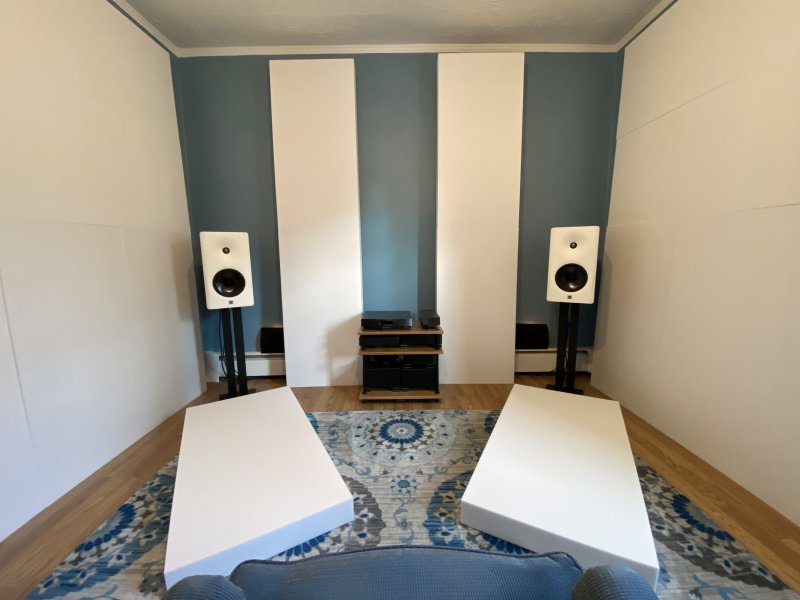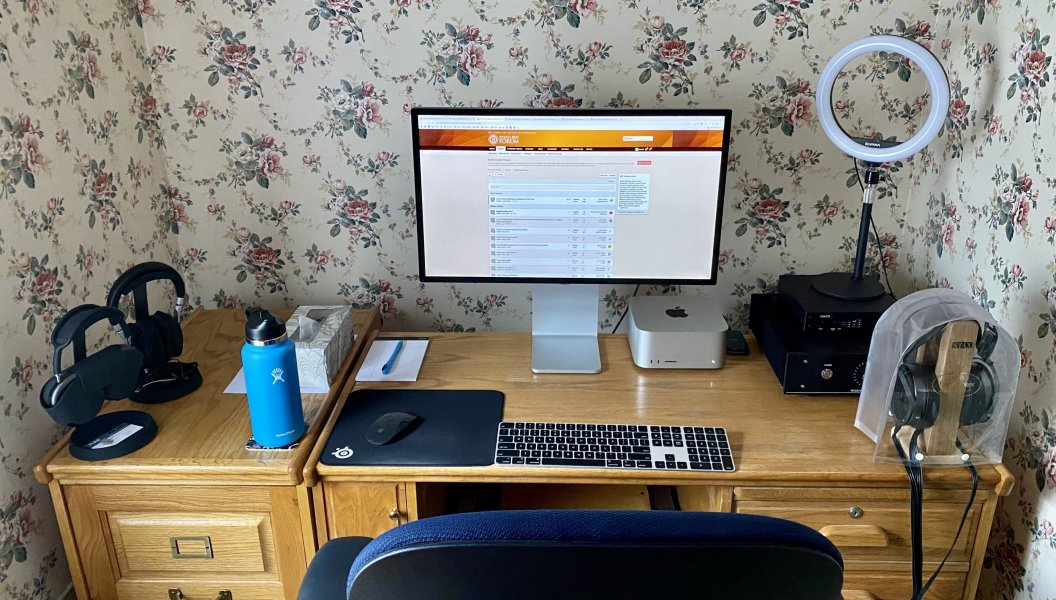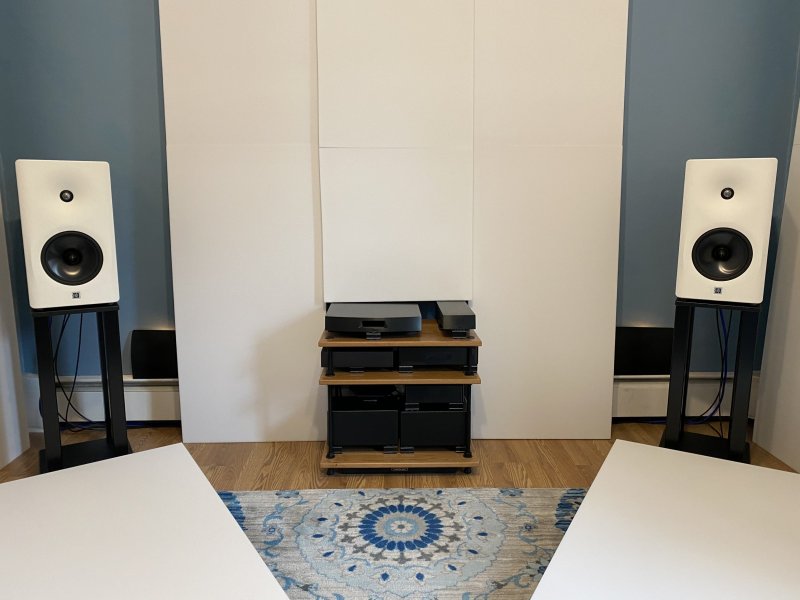Audio Room: Latest edit is 11/21/2025
This is a two-channel stereo, streaming-audio-only system, with an integrated amp/equalizer and no subwoofers.
This is a two-channel stereo, streaming-audio-only system, with an integrated amp/equalizer and no subwoofers.
- Streaming: Xfinity 2 Gigabit internet service, feeding Xfinity XB8 Gateway, feeding 90 feet of CAT6 shielded ethernet cable, feeding 5 feet of Blue Jeans Cable Cat 6 Patch Cord ethernet cable, feeding Network Acoustics Tempus Precision Ultra Low Noise Ethernet Switch, feeding 1.5 meters Network Acoustics Muon Pro Streaming Cable, feeding Network Acoustics Muon Pro Ethernet Filter, feeding 0.75 meter Network Acoustics Muon Pro Streaming Cable, feeding Lyngdorf TDAI 3400.
- Sources: Roon (including its My Live Radio function for free internet radio sources), Qobuz via Qobuz Connect, and AirPlay for other online streaming sources behind paywalls such as Sirius/XM. Roon Labs Poor Man's Nucleus Plus as a Roon Core with 19-volt Farad Super3 LPS with optional Level 2 Classic DC cable for Roon streaming. Following Roon's recommendation, this Roon Core is connected by Blue Jeans Cable Cat 6 Patch Cords ethernet cable to my router in a different room, and thus not physically present in my audio room or powered by the dedicated circuits of my audio room. Music files are played from a 1 TB Supersonic Rage Prime USB 3.2 Gen 2 Flash Drive inserted into one of the USB ports of the Roon Core.
- Speakers: Larsen 9 floorstanding speakers in ebony finish used with their factory soft feet.
- Amplifier: Lyngdorf TDAI 3400
- Equalization: Room Perfect and Voicings via Lyngdorf TDAI 3400.
- Speaker Cables: Blue Jeans Cable Canare 4S11, single wired connections to bass binding posts on speakers, locking banana plugs at both ends, 20 feet long. Factory jumper wires are used to connect the bass binding posts to the tweeter binding posts for single-wired operation.
- Equipment Stand: Salamander Archetype three shelf 20"-high equipment stand.
- Power Cables: GTT Audio Absolute Power Cord MkII (14 gauge) for all electronic components.
- Vibration Control: A/V Room Service Equipment Vibration Protectors (EVPs)--usually three two-inch square rubber EVPs of proper load rating under each electronic component on equipment rack, although with the small and very lightweight Network Acoustics Muon Pro Ethernet Filter I only use one EVP carefully placed under the item to distribute the load evenly on the EVP's bellows suspension. Large (17" x 12" x 1.5") Bright Star Audio Little Rock on floor under equipment rack to damp local laminate wood floor vibration near where the rack feet contact the floor.
- System Control: Apple iPad Pro 11-inch (M-4) running the Lyngdorf Remote App, the My Lyngdorf App, the Roon App, and apps for various internet radio streaming services.
- Room: 161.625" L x 132" W x 103.5" H rectangular converted bedroom. The speakers are set up against one long wall with the speakers firing across/into the 132" dimension of the room. The room has plaster walls and ceiling and a solid hardwood floor. The ceiling has a popcorn texture. There is one double hung window on wall behind the listening position, one door on wall behind the speakers, and one large closet stuffed with unused-at-this-time acoustic foam behind all of the left wall. Large thick cut-pile oriental style area rug and rubber pad beneath to damp floor reflections. Diffusion is added to the rear of the room by including a bookcase stuffed with audio magazines, two 550-disc capacity Stor-a-Disc solid cherry variably-angled CD shelving units, and one small Stor-a-Disc angled CD rack, all full of CDs.
- Listening Chair: Drexel velour upholstered chair to put my ears about 37" above the rug, just above the top of the speakers.
- Room treatment: About 48 square feet of natural white Acoustical Solutions four-inch-thick AlphaSorb Flat Foam acoustic foam covering first-reflection areas of the far speaker from the sidewalls and the first reflection area of both speakers from the window wall behind the listening seat.
- Electrical: Two dedicated 20-amp circuits using 12-gauge copper wire; P.I. Audio Group customized Pass & Seymour 5362A wall outlets, P.I. Audio Group UberBUSSes, P.I. Audio Group BUSS Depot; Caig Labs Deoxit Pro G100L-2DB for all non-soldered electrical connections. All unused RCA, XLR, ethernet, HDMI, and USB ports covered with Audioquest Noise-Stopper Caps. Further electrical tweaks are discussed at this link.
- Lighting: I use one four-watt incandescent nightlight positioned near the rear of the right wall, out of the line of sight from the listening seat and plugged into an outlet not powered by a circuit powering the audio equipment. It is shielded from sight by an opaque 8.5" x 11" black plastic sheet to allow the nightlight to provide just a dim wash of light on the wall behind the speakers, just enough to allow my eyes to focus on sonic images in open-eyes listening after dark, without distracting me with views of the audio equipment. I use mostly all black equipment and also turn off or cover up all operating lights with black electrical tape. The equipment is thus all "black boxes" and is mounted against the right side wall so as to prevent my attention from being drawn to any bright points in space or even the equipment boxes, maximizing perception of imaging and staging even during daylight hours.
- Pictures: See attached.
- Blue Room A/V System--see this link.
Attachments
-
 IMG_0724.jpg557.1 KB · Views: 46
IMG_0724.jpg557.1 KB · Views: 46 -
 IMG_0725.jpg707.9 KB · Views: 39
IMG_0725.jpg707.9 KB · Views: 39 -
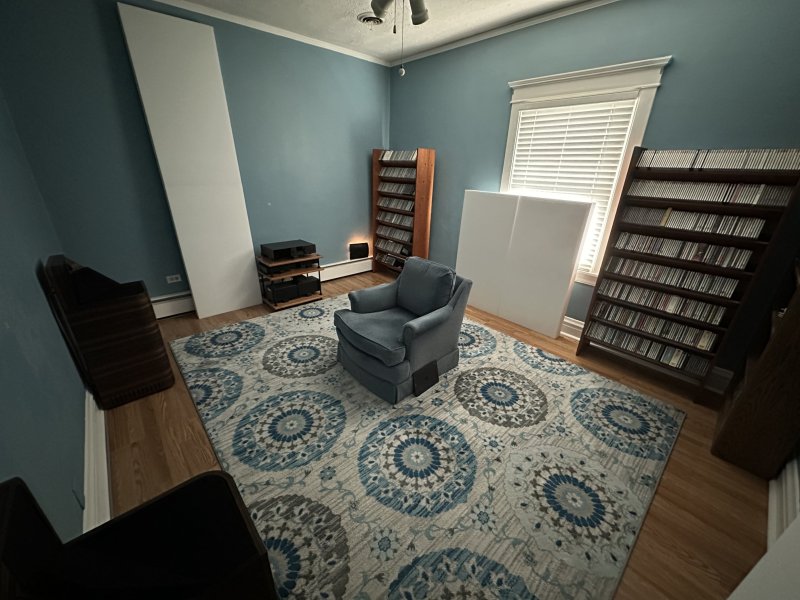 IMG_0726.jpg720.1 KB · Views: 34
IMG_0726.jpg720.1 KB · Views: 34 -
 IMG_0727.jpg585.4 KB · Views: 33
IMG_0727.jpg585.4 KB · Views: 33 -
 IMG_0728.jpg621.1 KB · Views: 30
IMG_0728.jpg621.1 KB · Views: 30 -
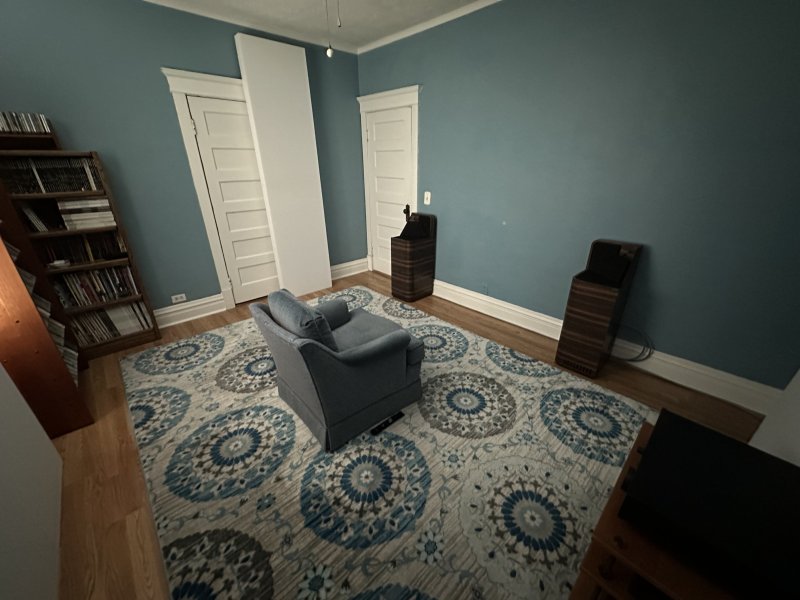 IMG_0729.jpg584 KB · Views: 29
IMG_0729.jpg584 KB · Views: 29 -
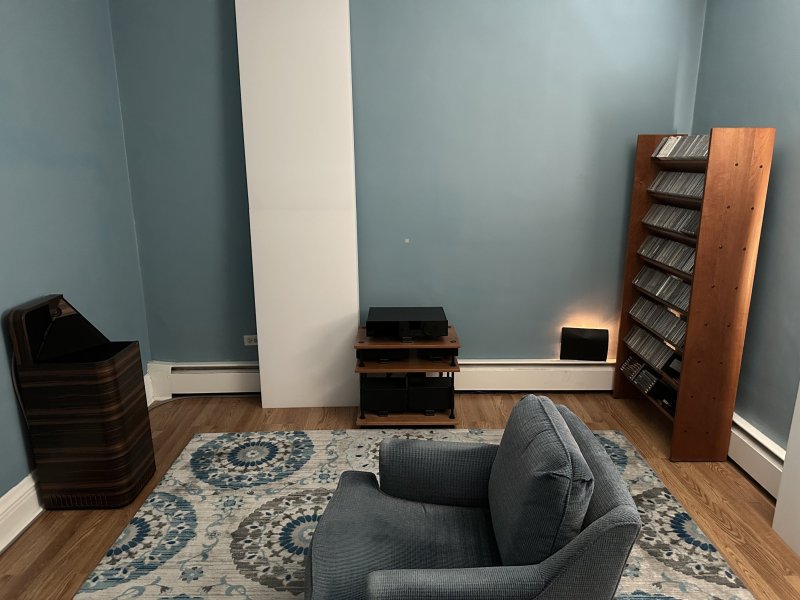 IMG_0731.jpg752.6 KB · Views: 28
IMG_0731.jpg752.6 KB · Views: 28 -
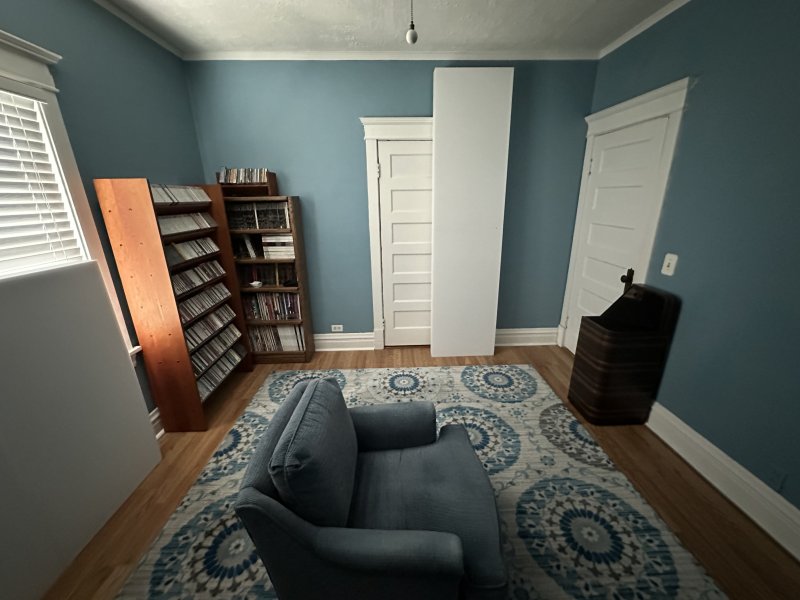 IMG_0732.jpg533.9 KB · Views: 33
IMG_0732.jpg533.9 KB · Views: 33 -
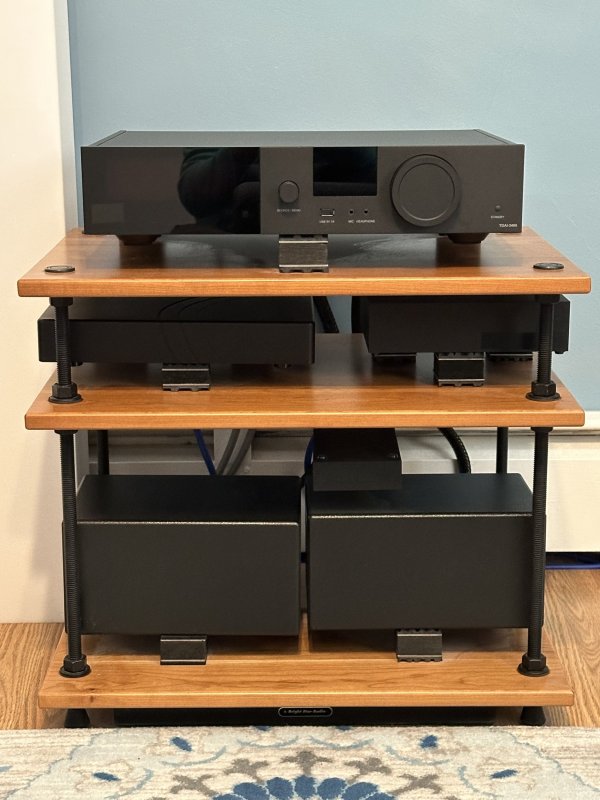 IMG_0751.jpg642.5 KB · Views: 27
IMG_0751.jpg642.5 KB · Views: 27 -
 IMG_0733.jpg1.4 MB · Views: 28
IMG_0733.jpg1.4 MB · Views: 28
Last edited:


